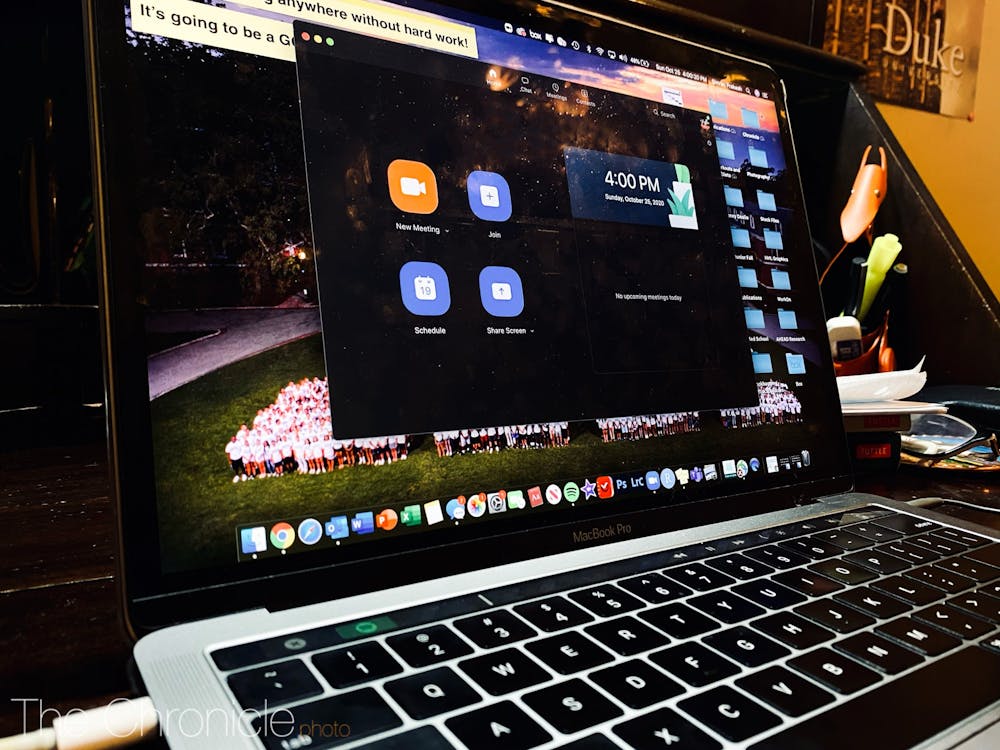Over this past academic year, online classes have presented students with unique challenges to their learning and engagement with professors, but the Academic Resource Center has continued to actively support and enhance students’ learning outside of class.
The ARC quickly adapted to address the new academic and social challenges that students would face in terms of connecting and learning with one another through learning resources such as one-on-one learning consultations, STEM Advancement through Group Engagement (SAGE) learning communities and peer tutoring.
All ARC services were available online within two weeks of moving to remote learning, according to Reed Colver, associate director and learning consultant of the ARC. She wrote that the ARC developed a learning online guide and identified “additional areas we could provide support to students during the transition to online and eventually for the subsequent year of virtual and hybrid learning.” These methods of support included tech chats, new videos on learning strategies and tools and support materials.
By adapting services to a virtual format, the ARC saw high levels of engagement among students. The ARC saw “significant engagement” with learning consultations and a decrease in our cancellations and no-shows, which led to the highest number of learning consultations on record for 2020-21, according to Colver.
She added that the ARC expanded on the courses offered in SAGE learning communities and made them more readily available to students, which helped increase engagement.
“We continued to offer our peer tutoring services virtually in both drop-in and group formats and increased how many and how often students could access peer tutoring services,” Colver wrote.
Many students found that having access to learning resources in an online format was crucial for their success.
“I thought online peer tutoring was helpful because we still got to see other students and the tutor face-to-face and meet upperclassmen that had a better grasp on the material. We were able to talk to someone who went through the course already which helped us get really great advice,” sophomore Jackie Herzberg said.
The convenience of online services such as small group peer tutoring saved time for many, allowing more people with tight schedules to sign up.
“It was a lot easier to fit into everyone’s schedule. If peer tutoring were in-person, it may take fifteen minutes to walk to the place where everyone is going to meet up and fifteen minutes afterwards, so that is an hour and a half of time put into the group tutorial instead of an hour,” said peer tutor Leaf Kalikow, a senior. “I think that the online format made it a lot more accessible to some students who had rigorous schedules who also wanted to take full advantage of the resources offered by the ARC.”
In addition, tutoring online allows for more creativity from the tutor’s side to ensure engagement from all students. For peer tutor Sophia Leeman, a sophomore, “tutoring online presented a different challenge, but working around the Zoom environment helped [her] realize different ways of teaching that are fun,” such as using the Zoom whiteboard or writing work down on paper and then holding it up to the screen for everyone to see.
“In normal times, we are gathering around a table so it can be hard for everyone to see what I’m writing, or it's hard for me to see what they are writing. Being able to all access the same screen was helpful,” Kalikow said.
Despite the various benefits of online tutoring, some personal connections were sacrificed in the virtual format.
“I liked that it was more convenient online but I think being in person would have allowed for more participation and more accountability in terms of attendance,” sophomore Michael Murata said.
For peer tutors, the lack of in-person interaction made it “harder to gauge people’s expressions,” Kalikow said.
“When I’m tutoring a student in-person, I feel like I can feel their stress when they are getting stressed. But over Zoom, I feel like I have a bit of a disconnect in how they are actually feeling about a subject,” Leeman said.
Peer tutors pushed for stronger connections and more engagement by making sure everyone participated in talking through problems and had their cameras on for the duration of the session. Kalikow felt that these approaches “made sure everyone was actively engaged.”
“I think that in Zoom, you are usually into the lull of someone talking to you instead of actively absorbing it all. In whatever problem I go through, I usually make my students explain how to work through it themselves first,” Leeman said.
The ARC’s continued efforts to provide students with learning resources in a virtual format while also fostering strong connections in the learning community have fostered growth among peer tutors and the organization.
“We look forward to learning more about how we can continue to make our services accessible to all students when we return to campus next year,” Colver wrote.
Get The Chronicle straight to your inbox
Signup for our weekly newsletter. Cancel at any time.
Amy Guan is a Pratt senior and a senior editor of The Chronicle's 119th volume.

